Here is an inside look on the latest production from Frontier Films, Rugged Rangers!

After animator Irv Spence finished his gangster spoof Rats in Spats, he had plans to shoot another film patterned after the 1940 Spencer Tracy vehicle Northwest Passage with many staffers from MGM’s animation department involved. In the King Vidor film, a band of colonial rangers set out on a journey to the Pacific Ocean, as they encounter and battle with Indians along the way. However, the attack on Pearl Harbor in 1941, which saw many artists drafted for military service, interrupted progress on Spence’s film.
In an interview with Mike Mallory in 1998, animator Ray Patterson recalled Spence had drawn many storyboard pages for Rugged Rangers—a file about as thick as a book. Patterson saved a large album of Spence’s storyboards for decades. These are now in the holdings of his family. It has not been confirmed if Rats in Spats was planned in this method, but Spence’s distinctive drawing and lettering are evident throughout the storyboards for Rangers. However, an unidentified artist whose style is vastly different from Spence’s draws a few sequences, including one with Stod Herbert and Pete Burness, both of whom were not cast in the final film. Ray Abrams was also depicted in the original storyboards, where he played an overzealous, “trigger-happy” ranger who fires wildly whenever he hears of imminent danger. These storyboard drawings might have been drawn in an earlier period when these artists were employed at MGM, so it seems the project took on further delays.
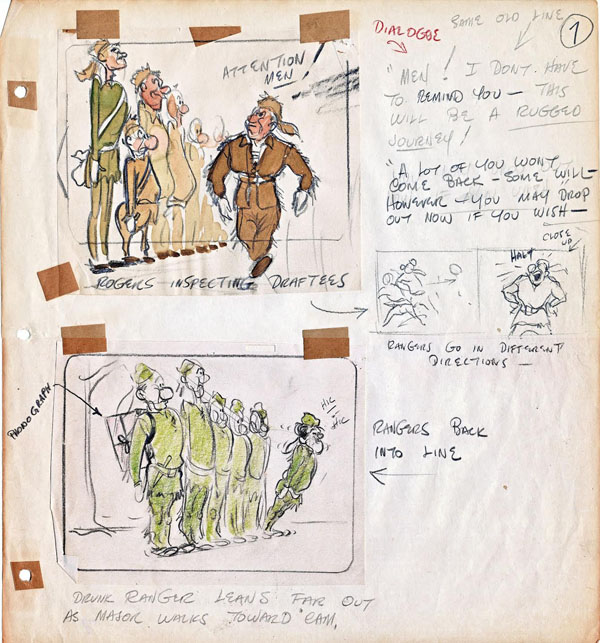
According to Mike Mallory’s interview and a blurb from the in-house MGM Studio Club News supplied by Kim Patterson, Rugged Rangers was shot on location over the course of several weeks on location at Big Bear, with some scenes filmed at Angeles Crest and the Red Rock Canyon. It is difficult to pinpoint when filming occurred. It is estimated that Robert “Tiger” West, who plays a pivotal role in the film, was not hired at MGM until approximately 1952 or 1953. The blurb indicates principal photography began in May, but it could have been either year.
The opening credits of Rugged Rangers list a variety of MGM artists cast as the titular rangers and Native Americans, including Jack Carr, Tom Ray (the film’s make-up artist and co-producer), Mike Lah, Ed Barge, and Harvey Eisenberg. There is also a “supported by” credit in the film, which includes Anna Lois Ray and June Patterson, the wives of Tom Ray and Ray Patterson. Irv Spence’s wife Alice is credited for the film’s costumes.
With the exception of Tom Ray and Felix Alegre (already profiled in the previous post on Rats in Spats), and Harvey Eisenberg, here is an overview on some of the credited MGM staffers, with accompanying pictures wherever possible. It should be noted that some of the rangers are not named in the film. Also, Spence appears in the film during the climactic battle as one of the enemy Indians, but only in a brief shot.
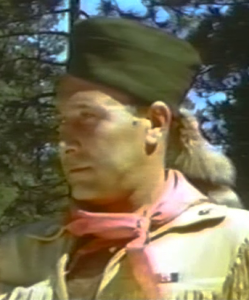 Ray Patterson plays the lead role as Major Rogers, a reference to Spencer Tracy’s character in King Vidor’s film. Born November 23, 1911 in Hollywood, Patterson was hired at Charles Mintz’s studio by September 1931, where he gradually became a full animator. On September 18, 1939, he was hired at Walt Disney’s studio but left during the strike two years later. He spent a brief period at Screen Gems when Frank Tashlin was its creative head. Patterson soon moved to MGM, assigned to the Hanna-Barbera unit. In the mid-1940s, Patterson left MGM to help organize and teach animation to fledgling artists at Dave Hand’s Gaumont British Animation studio. He moved back to MGM and continued as an animator for several years at Hanna-Barbera’s unit, while occasionally animating in the second units, headed by Dick Lundy, then Tex Avery. In June 1953, Walter Lantz hired Patterson and teamed him with animator Grant Simmons where they wrote, animated and directed two cartoons together (Broadway Bow Wows and Dig that Dog).
Ray Patterson plays the lead role as Major Rogers, a reference to Spencer Tracy’s character in King Vidor’s film. Born November 23, 1911 in Hollywood, Patterson was hired at Charles Mintz’s studio by September 1931, where he gradually became a full animator. On September 18, 1939, he was hired at Walt Disney’s studio but left during the strike two years later. He spent a brief period at Screen Gems when Frank Tashlin was its creative head. Patterson soon moved to MGM, assigned to the Hanna-Barbera unit. In the mid-1940s, Patterson left MGM to help organize and teach animation to fledgling artists at Dave Hand’s Gaumont British Animation studio. He moved back to MGM and continued as an animator for several years at Hanna-Barbera’s unit, while occasionally animating in the second units, headed by Dick Lundy, then Tex Avery. In June 1953, Walter Lantz hired Patterson and teamed him with animator Grant Simmons where they wrote, animated and directed two cartoons together (Broadway Bow Wows and Dig that Dog).
A year later, he and Simmons formed a studio, with producer Robert Lawrence as their partner. Grantray-Lawrence specialized in animated shorts and commercials, but also subcontracted work from UPA and Hanna-Barbera. In the mid-1960s, their studio took on work for producer Steve Krantz on several TV series featuring Marvel’s superheroes, including the first season of Spider-Man.
Grantray-Lawrence went bankrupt in 1967. Patterson joined Hanna-Barbera as a supervising director and performed directorial duties for Fred Calvert Productions. In between these positions, he worked as sequence director on Sanrio Productions’ feature Metamorphoses and served as a key animator on Ralph Bakshi’s Coonskin. In 1976, Patterson joined Hanna-Barbera on an exclusive basis and became their vice president in charge of animation direction in 1985. Though he retired in 1993, he continued to freelance on different television productions, either slugging storyboards (timing the recorded lines of dialogue) or as an animation director. He passed away December 30, 2001.
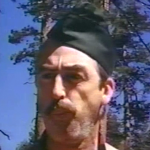 Jack Carr is the narrator of Rugged Rangers and plays the role of the head scout. Born June 23, 1901 in Manhattan, John Joseph Carr began his professional career drawing comic strips for The New York Globe. He started in the animation industry at Pat Sullivan’s studio in 1924, and later animated at Bill Nolan’s studio in Long Branch, New Jersey on the Krazy Kat cartoons a year later. When Nolan’s studio folded, he worked at Charles Mintz’s studio in New York and relocated with them to California in 1930. There, he worked as an animator for Mintz, Walter Lantz and Leon Schlesinger throughout the 1930s. According to Bob Clampett, Carr occasionally performed fill-in voices, particularly for Krazy Kat and Buddy. By the early 1940s, he worked at MGM, mainly as an assistant animator. He received screen credit as an animator in George Gordon’s unit. According to Mike Lah, Carr was responsible for the name Tom and Jerry for Hanna and Barbera’s new cat and mouse characters. By the late 1950s, he joined Hanna-Barbera as an animator, and retired by November 1967. He suffered from cancer by the early 1970s, and passed away August 3, 1974.
Jack Carr is the narrator of Rugged Rangers and plays the role of the head scout. Born June 23, 1901 in Manhattan, John Joseph Carr began his professional career drawing comic strips for The New York Globe. He started in the animation industry at Pat Sullivan’s studio in 1924, and later animated at Bill Nolan’s studio in Long Branch, New Jersey on the Krazy Kat cartoons a year later. When Nolan’s studio folded, he worked at Charles Mintz’s studio in New York and relocated with them to California in 1930. There, he worked as an animator for Mintz, Walter Lantz and Leon Schlesinger throughout the 1930s. According to Bob Clampett, Carr occasionally performed fill-in voices, particularly for Krazy Kat and Buddy. By the early 1940s, he worked at MGM, mainly as an assistant animator. He received screen credit as an animator in George Gordon’s unit. According to Mike Lah, Carr was responsible for the name Tom and Jerry for Hanna and Barbera’s new cat and mouse characters. By the late 1950s, he joined Hanna-Barbera as an animator, and retired by November 1967. He suffered from cancer by the early 1970s, and passed away August 3, 1974.
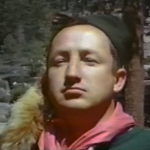 “Tiger” West plays Shorty, a woodsman drafted as a ranger and nicknamed for his obvious stature. Robert John West was born July 4, 1924 in Los Angeles. His 1942 draft registration card indicates that he worked at Lockheed before he joined the animation industry. Around 1944, he was hired at Disney as an animation checker/scene planner. Later, West became an assistant to animator Bob Carlson and took a secondary position under chief effects animator Josh Meador. By the early 1950s, he moved to MGM as assistant animator in the Hanna-Barbera unit. Shortly after, he left to join Grantray-Lawrence, where he became the company’s vice president by August 1966, according to Business Screen Magazine. While Grantray-Lawrence produced their shows based on Marvel superheroes, he acted as their production supervisor, and spearheaded a method to convert comic book panels into cels using Xerox technology. Based on this technique, he was hired at Hanna-Barbera as a supervisor of their Xerox department in 1968. In the early 1970s, West helped expand the studio’s operations in Australia. In 1977, he partnered with Walt Kubiak to create Kubiak-West Entertainment, subcontracting animation from Hanna-Barbera, Ruby/Spears and Depatie-Freleng Enterprises until 1982. He worked as an animator for Bill Hutten and Tony Love (son of animator Ed Love) on half-hour television specials, and did various directorial duties for Marvel Productions, Henson Associates and Fred Wolf Films before his retirement in 1989. He passed away on February 13, 2006. Mark Kausler recalled West while meeting him at Hanna-Barbera as a man “short in height, but long in laughter.”
“Tiger” West plays Shorty, a woodsman drafted as a ranger and nicknamed for his obvious stature. Robert John West was born July 4, 1924 in Los Angeles. His 1942 draft registration card indicates that he worked at Lockheed before he joined the animation industry. Around 1944, he was hired at Disney as an animation checker/scene planner. Later, West became an assistant to animator Bob Carlson and took a secondary position under chief effects animator Josh Meador. By the early 1950s, he moved to MGM as assistant animator in the Hanna-Barbera unit. Shortly after, he left to join Grantray-Lawrence, where he became the company’s vice president by August 1966, according to Business Screen Magazine. While Grantray-Lawrence produced their shows based on Marvel superheroes, he acted as their production supervisor, and spearheaded a method to convert comic book panels into cels using Xerox technology. Based on this technique, he was hired at Hanna-Barbera as a supervisor of their Xerox department in 1968. In the early 1970s, West helped expand the studio’s operations in Australia. In 1977, he partnered with Walt Kubiak to create Kubiak-West Entertainment, subcontracting animation from Hanna-Barbera, Ruby/Spears and Depatie-Freleng Enterprises until 1982. He worked as an animator for Bill Hutten and Tony Love (son of animator Ed Love) on half-hour television specials, and did various directorial duties for Marvel Productions, Henson Associates and Fred Wolf Films before his retirement in 1989. He passed away on February 13, 2006. Mark Kausler recalled West while meeting him at Hanna-Barbera as a man “short in height, but long in laughter.”
 Mike Lah plays the drunken ranger, often seen drinking from a canteen filled with rum. Born September 1, 1912 in Waukegan, Illinois, Lah began his animation career as an in-betweener at Walt Disney’s studio in 1934. He migrated to Harman-Ising in 1936, where he became an assistant animator to Mel Shaw, and was promoted to full animator by 1938. After Harman and Ising’s studio closed and the two were hired by MGM, Lah animated in Ising’s unit. After Ising left the studio in 1942, Lah was shifted to George Gordon’s unit until his departure. During that time, Lah made his directorial debut with The Unwelcome Guest, a 1945 Barney Bear cartoon often attributed to Gordon. When Irv Spence left for John Sutherland’s studio, Lah replaced him as an animator on a few Tom and Jerry cartoons, released in 1946 and 1947. Producer Fred Quimby teamed Lah with Preston Blair in a directorial unit on three Barney Bear cartoons released in 1948 and 1949. Shortly after, Lah moved to Tex Avery’s unit as one of his main animators. When Avery left on a sabbatical in 1950, Dick Lundy took over his spot and Lah animated on Lundy’s cartoons. A year later, Avery came back to MGM, with Lah remaining in his unit. When Avery’s unit was disbanded in 1953, Lah took over direction on two cartoons (Deputy Droopy and Cellbound). He left the studio in to work at Cascade on television commercials, but was soon invited back to MGM to animate a sequence in Gene Kelly’s live-action film Invitation to the Dance (1956). Then, Lah was given his own directorial unit on several cartoons featuring Droopy before the studio closed in 1957. Lah freelanced on commercials for Quartet Films and Walt Disney’s studio, before Hanna and Barbera hired him as an animator and layout artist on the first season of The Huckleberry Hound Show. Lah departed from Hanna-Barbera in 1958 to set up his own company called Cinema Ad. In 1960, he went back to work for Quartet, where he became their vice-president by January 1961. He remained with the company for the rest of his career; one of his last credits was on DiC’s revival of Beany and Cecil as an animation timer. He passed away October 13, 1995 in Los Angeles.
Mike Lah plays the drunken ranger, often seen drinking from a canteen filled with rum. Born September 1, 1912 in Waukegan, Illinois, Lah began his animation career as an in-betweener at Walt Disney’s studio in 1934. He migrated to Harman-Ising in 1936, where he became an assistant animator to Mel Shaw, and was promoted to full animator by 1938. After Harman and Ising’s studio closed and the two were hired by MGM, Lah animated in Ising’s unit. After Ising left the studio in 1942, Lah was shifted to George Gordon’s unit until his departure. During that time, Lah made his directorial debut with The Unwelcome Guest, a 1945 Barney Bear cartoon often attributed to Gordon. When Irv Spence left for John Sutherland’s studio, Lah replaced him as an animator on a few Tom and Jerry cartoons, released in 1946 and 1947. Producer Fred Quimby teamed Lah with Preston Blair in a directorial unit on three Barney Bear cartoons released in 1948 and 1949. Shortly after, Lah moved to Tex Avery’s unit as one of his main animators. When Avery left on a sabbatical in 1950, Dick Lundy took over his spot and Lah animated on Lundy’s cartoons. A year later, Avery came back to MGM, with Lah remaining in his unit. When Avery’s unit was disbanded in 1953, Lah took over direction on two cartoons (Deputy Droopy and Cellbound). He left the studio in to work at Cascade on television commercials, but was soon invited back to MGM to animate a sequence in Gene Kelly’s live-action film Invitation to the Dance (1956). Then, Lah was given his own directorial unit on several cartoons featuring Droopy before the studio closed in 1957. Lah freelanced on commercials for Quartet Films and Walt Disney’s studio, before Hanna and Barbera hired him as an animator and layout artist on the first season of The Huckleberry Hound Show. Lah departed from Hanna-Barbera in 1958 to set up his own company called Cinema Ad. In 1960, he went back to work for Quartet, where he became their vice-president by January 1961. He remained with the company for the rest of his career; one of his last credits was on DiC’s revival of Beany and Cecil as an animation timer. He passed away October 13, 1995 in Los Angeles.
 Ed Barge plays an unnamed ranger in the film. Barge was born on August 29, 1910 in San Jose, California. Before he joined the animation industry, Barge lived in Bakersfield, where he worked as a service station’s auto mechanic during the late 1920s and early 1930s, according to city directories. In the late 1930s, he moved to Los Angeles and took a job at MGM’s animation department. He became a full animator by the early 1940s and received on-screen credit for his work in George Gordon’s unit. Gordon left the studio, as did animator Pete Burness, so Barge replaced him in the Hanna-Barbera unit as one of the main Tom and Jerry animators. In May 1956, Barge left MGM to work for a commercial outfit called Animation Inc. as an art director, assistant animator and story sketch artist. By the early 1960s, he became their main art director. In the late 1960s, he moved over to Hanna-Barbera as an animator, where he remained until the early 1980s. Besides his time at Hanna-Barbera, he served as a key animator on Ralph Bakshi’s Coonskin (1975). He passed away in Los Angeles on September 29, 1991.
Ed Barge plays an unnamed ranger in the film. Barge was born on August 29, 1910 in San Jose, California. Before he joined the animation industry, Barge lived in Bakersfield, where he worked as a service station’s auto mechanic during the late 1920s and early 1930s, according to city directories. In the late 1930s, he moved to Los Angeles and took a job at MGM’s animation department. He became a full animator by the early 1940s and received on-screen credit for his work in George Gordon’s unit. Gordon left the studio, as did animator Pete Burness, so Barge replaced him in the Hanna-Barbera unit as one of the main Tom and Jerry animators. In May 1956, Barge left MGM to work for a commercial outfit called Animation Inc. as an art director, assistant animator and story sketch artist. By the early 1960s, he became their main art director. In the late 1960s, he moved over to Hanna-Barbera as an animator, where he remained until the early 1980s. Besides his time at Hanna-Barbera, he served as a key animator on Ralph Bakshi’s Coonskin (1975). He passed away in Los Angeles on September 29, 1991.
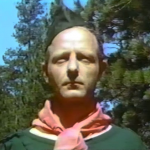 Lovell Norman plays another nondescript ranger in the film. Lovell Burch Norman was born November 12, 1912 in Hollister, Oklahoma. His family moved to Spokane, Washington by 1920. Norman re-located to California the following decade, and first worked in animation around 1934, when his friend recommended him to Charles Mintz’s studio—animator Emery Hawkins. Soon, Norman met a young woman named Margeurite Estelle Reese, whom he recruited to Mintz’s studio as an ink-and-paint artist. The two married on June 29, 1938, with Hawkins as their witness. Norman moved to MGM by 1940 and worked there as an animator; the 1944 Los Angeles City Directory indicates he continued this position, listing his occupation as “cartoonist”. He gradually became the studio’s chief sound editor until the animation department closed in 1957. Norman stayed on the main lot at MGM as a sound effects engineer but returned to animation working as a film and sound editor for Chuck Jones’ Sib-Tower 12 Productions in the 1960s. He is credited for “electronic sound effects” in the science fiction film The Power, produced by George Pal and released in 1968. By the early 1990s, Norman and his wife lived in Kingman, Arizona. He passed away on August 5, 2000 in Rockport, Maine.
Lovell Norman plays another nondescript ranger in the film. Lovell Burch Norman was born November 12, 1912 in Hollister, Oklahoma. His family moved to Spokane, Washington by 1920. Norman re-located to California the following decade, and first worked in animation around 1934, when his friend recommended him to Charles Mintz’s studio—animator Emery Hawkins. Soon, Norman met a young woman named Margeurite Estelle Reese, whom he recruited to Mintz’s studio as an ink-and-paint artist. The two married on June 29, 1938, with Hawkins as their witness. Norman moved to MGM by 1940 and worked there as an animator; the 1944 Los Angeles City Directory indicates he continued this position, listing his occupation as “cartoonist”. He gradually became the studio’s chief sound editor until the animation department closed in 1957. Norman stayed on the main lot at MGM as a sound effects engineer but returned to animation working as a film and sound editor for Chuck Jones’ Sib-Tower 12 Productions in the 1960s. He is credited for “electronic sound effects” in the science fiction film The Power, produced by George Pal and released in 1968. By the early 1990s, Norman and his wife lived in Kingman, Arizona. He passed away on August 5, 2000 in Rockport, Maine.
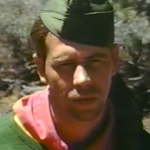 John Boersma (misspelled “Boersema” in the credits) plays the tallest ranger in the film. Judging from Martha Sigall’s description in her autobiography Living Life Inside the Lines, he was the studio’s star volleyball player, standing at 6’4’’. John Sidney Boersma was born February 18, 1921 in Allen, Indiana. He worked as a commercial artist in Michigan when he enlisted in the Air Corps on August 26, 1940 in Detroit. His draft registration card, filled out in October 1945, notes he worked for the Kalasign Company in Kalamazoo. His occupation is also listed as a commercial artist on his marriage registration, dated November 17, 1945 at his hometown. He moved to Los Angeles by 1948, according to the LA City Directory, where he was hired at MGM as an in-betweener, and later promoted to assistant animator. He met his second wife, Grace Enwright, at the studio and they married on December 29, 1950, with “Tiger” West as their witness; this might contradict West’s estimated hire date at MGM, but it’s possible the two befriended each other beforehand. After the animation department closed, he co-founded a studio called Animation Associates with Lou Zukor and Rudy Cataldi. Their company produced a serialized animated series, Q.T. Hush, which debuted in September 1960. Boersma moved to Hanna-Barbera to work as an animator in the early 1960s. Throughout the 1970s, he handled several duties at H-B—animator, supervisor of the in-between breakdown department and animation coordinator. In the early ‘80s, he was promoted to assistant animation supervisor. He is credited for his work at Film Roman as an assistant animator on Garfield in Disguise (1985). He passed away on December 8, 1999 in Bakersfield, California.
John Boersma (misspelled “Boersema” in the credits) plays the tallest ranger in the film. Judging from Martha Sigall’s description in her autobiography Living Life Inside the Lines, he was the studio’s star volleyball player, standing at 6’4’’. John Sidney Boersma was born February 18, 1921 in Allen, Indiana. He worked as a commercial artist in Michigan when he enlisted in the Air Corps on August 26, 1940 in Detroit. His draft registration card, filled out in October 1945, notes he worked for the Kalasign Company in Kalamazoo. His occupation is also listed as a commercial artist on his marriage registration, dated November 17, 1945 at his hometown. He moved to Los Angeles by 1948, according to the LA City Directory, where he was hired at MGM as an in-betweener, and later promoted to assistant animator. He met his second wife, Grace Enwright, at the studio and they married on December 29, 1950, with “Tiger” West as their witness; this might contradict West’s estimated hire date at MGM, but it’s possible the two befriended each other beforehand. After the animation department closed, he co-founded a studio called Animation Associates with Lou Zukor and Rudy Cataldi. Their company produced a serialized animated series, Q.T. Hush, which debuted in September 1960. Boersma moved to Hanna-Barbera to work as an animator in the early 1960s. Throughout the 1970s, he handled several duties at H-B—animator, supervisor of the in-between breakdown department and animation coordinator. In the early ‘80s, he was promoted to assistant animation supervisor. He is credited for his work at Film Roman as an assistant animator on Garfield in Disguise (1985). He passed away on December 8, 1999 in Bakersfield, California.
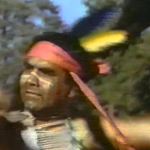 Manny Corral plays the role of Blue Knee, one of the central “Injun” characters in the film. José Manuel Corral was born in Chihuahua, Mexico on January 16, 1907 and emigrated to El Paso, Texas on September 15, 1920. He attended Loyola College, where he was regarded as an “all-around athlete” and baseball player, according to the February 1941 issue of International Photographer. He married to Loretta Down while he was still at Loyola on May 28, 1927. According to the 1930 Los Angeles census, he worked as a waiter at the café of a private college. By 1936, he was a camera operator at Leon Schlesinger’s studio; production managers Johnny Burton and Henry Binder were witnesses of his naturalization as an American citizen in October 1940. On September 23, 1942, Corral enlisted in the Army Signal Corps’ Photographic Center; the October 1942 issue of Variety mentioned Corral worked at Columbia, indicating a possible move from Schlesinger’s studio to Screen Gems sometime before he was drafted. He returned to civilian life on September 3rd, 1945, and took a position at Fletcher Smith Studios in New York, according to Top Cel. He re-located to Los Angeles by 1948, as indicated in the city directory, but it is unknown when he was hired at MGM or what position he held. He passed away March 13, 1988 in San Diego, California.
Manny Corral plays the role of Blue Knee, one of the central “Injun” characters in the film. José Manuel Corral was born in Chihuahua, Mexico on January 16, 1907 and emigrated to El Paso, Texas on September 15, 1920. He attended Loyola College, where he was regarded as an “all-around athlete” and baseball player, according to the February 1941 issue of International Photographer. He married to Loretta Down while he was still at Loyola on May 28, 1927. According to the 1930 Los Angeles census, he worked as a waiter at the café of a private college. By 1936, he was a camera operator at Leon Schlesinger’s studio; production managers Johnny Burton and Henry Binder were witnesses of his naturalization as an American citizen in October 1940. On September 23, 1942, Corral enlisted in the Army Signal Corps’ Photographic Center; the October 1942 issue of Variety mentioned Corral worked at Columbia, indicating a possible move from Schlesinger’s studio to Screen Gems sometime before he was drafted. He returned to civilian life on September 3rd, 1945, and took a position at Fletcher Smith Studios in New York, according to Top Cel. He re-located to Los Angeles by 1948, as indicated in the city directory, but it is unknown when he was hired at MGM or what position he held. He passed away March 13, 1988 in San Diego, California.
 Marjorie Howe plays “Red Hot Feather,” the love interest of Shorty the ranger who belongs to Chief Yellow Hand. Unfortunately, information on Howe is elusive as of this writing. One possible lead, based on conjecture, was born January 26th, 1923 in Texas and passed away December 29th, 1981 in Los Angeles. Mindy Johnson’s research confirms her married name as Marjorie Howe Roach, and that she had worked at MGM as early as 1942. According to the 1945 issue of the union newsletter The Animator, Howe was promoted from in-betweener to “color model girl.”
Marjorie Howe plays “Red Hot Feather,” the love interest of Shorty the ranger who belongs to Chief Yellow Hand. Unfortunately, information on Howe is elusive as of this writing. One possible lead, based on conjecture, was born January 26th, 1923 in Texas and passed away December 29th, 1981 in Los Angeles. Mindy Johnson’s research confirms her married name as Marjorie Howe Roach, and that she had worked at MGM as early as 1942. According to the 1945 issue of the union newsletter The Animator, Howe was promoted from in-betweener to “color model girl.”
“Ace” Fikes plays the hospitable “Big Chief Round Cloud” in the film. A close family friend of director Irv Spence, he can be seen in many entries of his cartoon diary from 1944, often under his affectionate nickname as “Acey”. Information on Fikes is patchy as of this writing. Born March 8th, 1896 in Karnes, Texas, Emil James Fikes worked as an oil field worker for Gulf Production Company at his home state, according to his 1917 draft registration card. He married Mabel Holt on February 20th, 1918. Her name is seen in some of Spence’s diary entries. They had two children together, Emil Jr. (in 1923) and Grady (in 1931), the latter of whom is credited as a supporting player. Fikes worked as a grocer by 1924, and owned a restaurant in Texas in 1930. His entry in the 1940 Census states that he operated a café, as does his 1942 draft registration card, which confirms its location in New Boston, Texas. By 1944, Fikes relocated to California, as the proprietor of the Plantation Coffee Shop in Culver City, which Spence and many of the MGM artists frequented. He passed away October 18, 1982 in Los Angeles.
Joe Morrison is listed under the “supported by” credit in the opening titles. Born May 15, 1925 at Iowa Park, Texas, Joseph Frank Morrison filled out his draft registration card on June 1942, under the name “Joe Frank Morrison.” However, it lists a 1924 birth date, possibly to appear a year older to enroll in military service. Morrison enlisted in the Marine Corps on September 12th, 1942, and married to Betty Carolyn Price in Los Angeles while still in the service on September 9th, 1944. As early as 1946, Morrison joined Walt Disney’s studio, confirmed by a bowling score document (via Hans Perk), which lists the studio’s team players; “Tiger” West is also among the players. According to Tim Walker, Morrison was one of Fred Moore’s last assistants before his death in 1952. It is uncertain when he joined MGM or how long he stayed; the connection between Morrison and “Tiger” West working together at Disney might have been a factor in his employment there. In the 1970s, he worked as an animator at Filmation. The following decade, Morrison was sequence director at Sunbow Productions and an animation timer at DiC (Beany and Cecil). In the 1990s, he worked as an animation director for Marvel’s Spider-Man: The Animated Series and freelanced as a timing director on The Sylvester and Tweety Mysteries. He passed away December 8, 2003 in Boulder City, Nevada.
HiJo Finck, sometimes listed as Joe Finck, is also another name under the film’s “supported by” credit. Hyrum Joseph Finck was born January 13, 1924 in Salt Lake City, Utah. His 1942 draft registration indicates that he worked for the Union Pacific Freight Department in his home state. Finck was inducted into the Navy on March 2, 1943 and was discharged into civilian life on February 6, 1946. By the time of his marriage on April 1947, he moved to California where he worked as an ice cream maker in Glendale. According to the 1948 Glendale directory, his occupation is listed as “woodworker.” By 1953, he joined MGM’s animation department and remained there until it closed in 1957. The 1957 Glendale city directory indicates he took a job at Disney, but it is uncertain how long he stayed. He was hired as an assistant animator at Warner Bros. by July 1960, according to Warners Club News, and continued working there as of April 1962. The directories from 1964 and 1965 list his occupation as architect, but Finck seems to have returned to the animation industry at Filmation, as per the 1967 directory. He soon moved to Hanna-Barbera, where he worked for several years. Among his credits is the half-hour special We Think the World is Round (produced in the 1970s at Filmation; released in 1984 by Hanna-Barbera), which was produced by Kay Wright and directed by Rudy Larriva. He passed away October 13, 2001 in Huntington Beach, California.

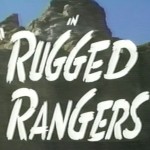

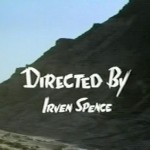
Now, for the plot synopsis…
As originally boarded by Spence, the action was set in colonial America, similar to the King Vidor film. The setting was changed to 1834 and the American West. Spence also drew a framing device in which contemporary newspaper reporters search for Major Rogers. They find the battered and beaten Major, who recounts the story of how the Rugged Rangers originated. Instead, the film opens with a wounded ranger scout (Jack Carr) running along a mountain trail with an arrow in the back of his leg. He lies down on a hill, fearing he will perish. As told through flashback, the scout unfolds the story of how the United States government ordered the Major (Ray Patterson) and the scout to recruit several men as rangers. Each man possesses different skills and attributes fit for the rank, ranging from woodsmen to marksmen. Their mission is to endure a long march from St. Louis to Fort Pawnee so their government can appoint a new Major.
Before the rangers can proceed with their trek, the Ranger and his main scout entrust an Indian guide (played by Felix Alegre) to identify the Native American Indians that would prove a threat. In a meeting with the rangers, the Major warns them of Yellow Hand, whom the narrator states is “one of the meanest Injuns west of the Missouri,” and Blue Knee, “who hates palefaces ‘worser’ than poison.”
After the rangers receive proper training, they venture forth to Fort Pawnee. Eventually, they arrive in Indian Territory at their hunting grounds—namely, the land of the Sioux, Blackfoot, Crow and Cheyenne tribes. They encounter Chief Round Cloud (“Ace” Fikes) at the Shoshone territory. He befriends the rangers and permits them to enter through his land without any interference.
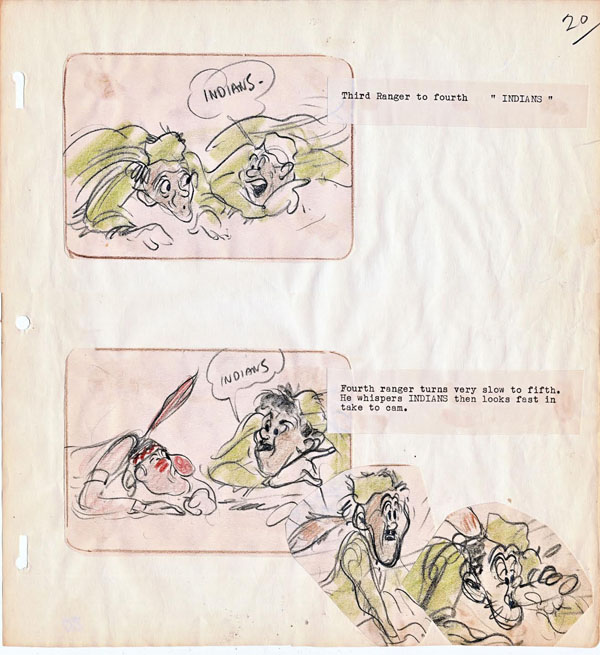
As the rangers sneak through Indian Territory, they stop to admire Red Hot Feather (Marjorie Howe) sitting on a rock. They spot Chief Yellow Hand (Harvey Eisenberg)—named for his yellow gloves—watching over them and run away. Shorty the woodsman (“Tiger” West), smitten with Red Hot Feather, stays with her. Yellow Hand approaches Shorty, extends his business card and sends him away. This role was originally intended for Stod Herbert, but he was not at the MGM studio during filming. There is also a shot in the film where Mike Lah’s ranger character sees Yellow Hand, and he reacts in a big-eyed take— ping-pong balls with dots drawn on them. The original storyboards revealed this technique would be used several times It’s only used once in the finished film, and the shot is too short to register.
On the march for over 150 days, the weary rangers enjoy a meal with Shorty on guard. They grow suspicious and suspect the animal sounds they hear in the distance to be Blackfoot Indians. The Major and his head scout send their best ranger Riley (Tom Ray) to investigate. While the rangers are asleep, Chief Yellow Hand sneaks into their camp and follows Shorty, still on sentry duty.
The next morning, the rangers find Shorty and Riley are missing, but they continue on their journey. They find Riley with an arrow in his chest at a short distance away from their camp and he dies in front of the rangers. The rangers pause their expedition to give Riley a proper burial. Like the earlier Rats in Spats, Tom Ray dies on-screen in this film. However, in the original storyboards, the arrows were equipped with rubber suction cups instead of stone tips, the latter of which proves more of a threat in the finished film.
Meanwhile, Shorty has been kidnapped and is tied to a tree. He breaks free and runs into the woods, finding Red Hot Feather gathering pinecones. They exchange looks and Shorty kisses her hand, but Yellow Hand spots them again. This leads to a chase through the woods, with the action shot by under-cranking, which makes it appear much like a silent comedy. Naturally, with such knockabout roots, the scene ends when Yellow Hand runs into a tree, which lands him on the ground.
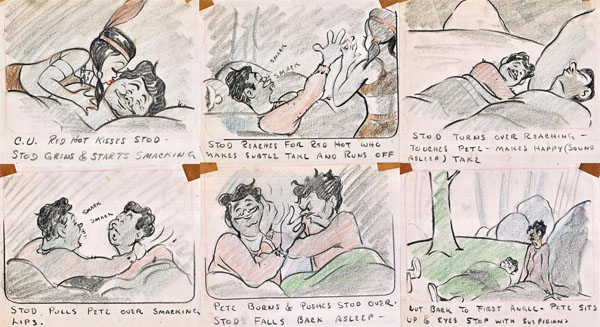
Meanwhile, Blue Knee from the Cheyenne Tribe (played by Manny Corral) follows the rangers on the trail. He strikes them with his tomahawk and holds them captive, gathering firewood and placing it underneath the Major. Shorty spots the kidnapped rangers and unties the Major. The rangers all want to fight their enemy as a team, but the Major insists he battle Blue Knee himself. After a vicious scuffle, the Cheyenne native loses the fight and runs away.
The rangers make their way to Massacre Canyon (pronounced “Massacree” in the film), almost to their destination at Fort Pawnee. They spot a smoke signal on a mountaintop from the Indians. The Indians attack the rangers from the mountain. An arrow strikes one ranger in the back and another is struck in the chest. During the battle, the Major charges out on his own, where he shoots and kills Blue Knee. The Major, Shorty and two other rangers are the only ones remaining. They pick up the head scout who points out they have finally arrived at Fort Pawnee. Their mission accomplished, Shorty fires shots from his rifle into the air in victory.
Spence uses several 78 rpm recordings on the soundtrack, such as the orchestral theme from Gone with the Wind, as played by Al Goodman and his Orchestra, to accentuate the extravagant scope of the film. The “Dagger Dance” from Victor Herbert’s opera Natoma is used as a main theme for scenes related to the Indians. Spence also cues excerpts from classical music in various scenes, such as Ferde Grofé’s “Grand Canyon Suite,” Anton Rubinstein’s “Kammenoi-Ostrow,” the “Scherzo” from Felix Mendelssohn’s A Midsummer Night’s Dream and Richard Wagner’s “Ride of the Valkyries.” There was no method to synchronize the sound during filming. When finished, Spence showed the film with two tape recorders, one containing the music and the other with Jack Carr’s narration, as Ray Patterson recalled to Mike Mallory. Eventually, Mike Lah borrowed the film and edited the two tracks together, adding sound effects in the process.
Now, here’s Rugged Rangers, presented to the general public for the first time! The film was shot in 16mm Kodachrome stock, but this transfer is sourced from a time-coded VHS copy.
(Thanks to Jerry Beck, Kim Patterson, Mark Kausler, Frank M. Young, Eric Costello, Yowp, Joe Campana, Tim Walker, Keith Scott for their help.)




 DEVON BAXTER is a film restoration artist, video editor, and animation researcher/writer currently residing in Pennsylvania. He also hosts a
DEVON BAXTER is a film restoration artist, video editor, and animation researcher/writer currently residing in Pennsylvania. He also hosts a 





















































































“Tiger” West’s career didn’t end in 1989. In the early 90’s he moved to London, where he worked at the ill-fated feature “Freddie as F.R.0 7” (a.k.a. “Freddie the Frog”) as a supervising animation production coordinator.
Also, Ed Barge was born on Aug 9, not the 29.
Great post, Devon! You really worked hard on the bios, I especially enjoyed reading about Manny Corral, Lovell Norman, Marjorie Howe, Joe Morrison and “Ace” Fikes, good pal of Irv Spence. The spelling of John Boersma’s name is a mystery to me. In the credits for Q.T. Hush, it is spelled “Boersema”, as in the “Rugged Rangers” credits. Perhaps he used the “Boersema” spelling as his “stage name’? Thanks again.
Nice bit of historical research, and another feather in the cap of this website.
Great job Devon!
Hello, I’m looking for an interview that Amid Amadi did with Ray Patterson for Animation Blast #5. Amid cannot get to his personal copies as they are separated by 3000 miles. I am researching for author, J. Ballmann, who is working on a 5 volume episode guide of the 1966 Marvel Super-Hero Cartoon Series. If you have access to this article, please let me know how I can obtain it for Mr. Ballmann. Thank you for your service!
Sincerely, Timothy Osterlund